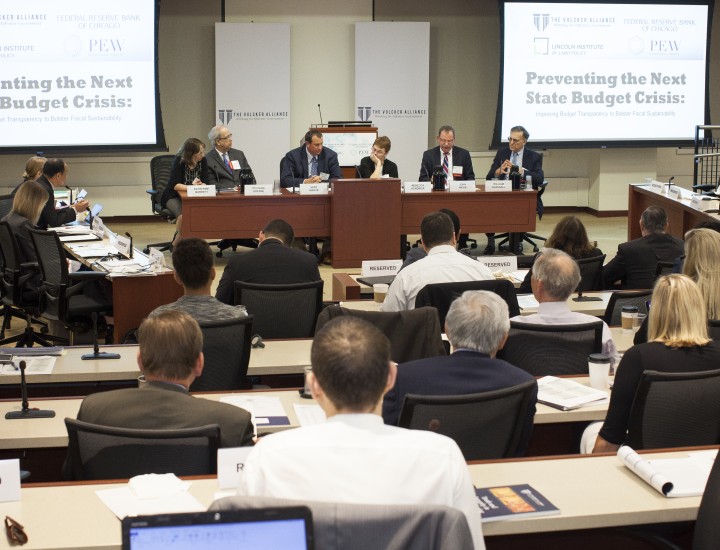A 5-Step Guide to Spending the American Rescue Plan Money

[This article was originally published in Route Fifty on July 6, 2021.]
States and localities have an enormous opportunity to create a better future if they spend the federal rescue funds wisely. Here’s how to do that.
The $350 billion that the American Rescue Plan Act has allocated for states and localities provides ample opportunities for them to resuscitate their economies, help their residents and even make improvements in their physical and human infrastructure. But like many happy lottery winners, who wind up regretting the choices they made in spending huge windfalls of cash, the money distributed under ARPA leaves recipients with the potential to look back with regret on decisions they are making now.
The temptation to rush to spend the money, without sufficient thought and consideration, may be difficult to overcome for many places. As Joseph Parilla, a fellow at the Brookings Metropolitan Policy Program told us, “I think there’s an incentive to move very quickly, because there still is a lot of pain out there. ... But you don’t want to risk eroding effectiveness in the pursuit of speed.”
Fortunately, a number of organizations are giving careful thought about both promising practices and pitfalls in the expenditure of the ARPA money. Following are five guidelines, garnered from sources including Brookings, the Government Finance Officers Association, the National League of Cities, the California Legislative Analyst’s Office and state and local government officials who are giving careful consideration to this once-in-a-generation enormous flow of cash.
Avoid using this one-time rescue money for ongoing expenditures. This is a fundamental principle of good government finance and is one of the criteria used by the Volcker Alliance, the Government Finance Officers Association and others as criteria for good budgeting.
Still, in their enthusiasm to put the money to use, states or localities may be seduced by the lure of new programs or facilities, even though they may no longer be able to afford them once the federal dollars stop.
“This is an exceedingly dangerous concern when you look at ARPA,” says Emily Brock, director of the Government Finance Officers Association’s federal liaison center.
Alexandria, Virginia, has taken these warnings seriously. Says Dana Wedeles, special assistant to the city manager, “We are being very strategic in making sure that the programs proposed are one-time expenses. Either the programs we begin won’t be needed after the Rescue Act money stops coming in, in three years, or we establish programs that can sustain themselves after three years.”
Before spending, identify the gaps where money is most needed. Among other things, this kind of thoughtful approach will help states and localities spend their ARPA money most equitably, ensuring that the constituencies that have been underserved in the past—many of which were among the most hurt by the pandemic—can be helped with these additional dollars.
One approach to following this guideline is to conduct needs assessments in a variety of ways. “Many of our counties are doing that,” says Eryn Hurley, associate legislative director at the National Association of Counties (NACo).
As Route Fifty pointed out in a recent article, one approach to evaluating needs is asking how constituents would like to spend the money.
In Shreveport, Louisiana, for example, the mayor has participated in 11 “listening sessions,” in which residents from all around the city have been invited to share their perspectives about where they think the $48 million of ARPA funds the city will be receiving would be best spent.
“We wanted to validate our internal priorities with those of the citizens,” says Shreveport’s mayor, Adrian Perkins. “And we’re not going to spend these dollars until we’ve heard from the community.”
Of course, localities can’t rely just on citizen input, because sometimes citizens aren’t aware of pressing issues that they don’t encounter in their day-to-day lives. Says GFOA’s Brock, “Finance officers have to balance competing priorities as they’re developing their spending plans for ARPA. When they get citizen input about capital projects, for example, those need to be balanced with others that aren't necessarily on the surface and obvious to people but are nonetheless important—for example water pipes. As decisions are being made, cities and counties have to figure out ways to weigh the priorities."
Be specific in legislation for spending. Carolyn Chu, chief deputy at the Legislative Analyst’s Office in California, cautions that legislatures not pass appropriations bills now that may be vague. That can leave room for the original legislative intent to be ignored in years to come.
Says Chu, “Sometimes, flexibility in legislation can work out well, as the legislature can exercise oversight. But in other cases, too much flexibility can mean money is unspent or not spent in the way the legislature would have originally envisioned.”
Coordinate spending among different levels of government. With separate allocations of funding going to counties, cities and states, there is a real risk that money will be wasted on duplicative programs. Additionally, governments can get much more bang for their buck if they work together when creating new programs—instead of each taking their own paths.
Hamilton County, Ohio, has been working closely with its largest city, Cincinnati, in order to coordinate their efforts. Jeff Aluotto, county administrator, has every other week phone conversations with the leadership in Cincinnati, “so they can stay in touch with what we’re doing and we with what they’re doing,” he says. “And we can work with them on leveraging for things like housing programs and arts programs, instead of putting something in place at the county level that doesn’t work well with what the city is doing.”
For example, both city and county are considering funneling the money they choose to spend on arts and cultural assistance through the same nonprofit organization, which may wind up distributing the combined contributions of county and city to a variety of arts-related efforts in the region.
Take care of the immediate bills but build for the future.The ARPA money provides a rare opportunity to redress the issues raised during the pandemic in a way that helps us—as President Biden has expressed it—“build back better.”
One particularly ripe example is in the realm of broadband, which is explicitly spelled out in the ARPA guidance as one that is near the top of the list for spending. Naturally, there are immediate needs to help residents pay for internet subscriptions, but that money will eventually run out. If the new funds are primarily spent on emergency subscriptions, that’s short-term thinking.
As Adie Tomer, a fellow at the Brookings Metropolitan Policy Program, points out, “The communities that do the most long-range planning now—like providing skills development in communities—will be able to most quickly and efficiently use moneys from a large broadband component of the (potential) infrastructure deal. Now is the time to plan around big ideas for the future and be ready to hit the ground running when the next steps toward the utilization of broadband are taken.”
Katherine Barrett and Richard Greene of Barrett and Greene, Inc. are columnists and senior advisers to Route Fifty and special project consultants to the Volcker Alliance.


